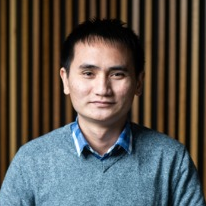Advances in Offshore Aquaculture and Renewable Energy Production
A special issue of Journal of Marine Science and Engineering (ISSN 2077-1312). This special issue belongs to the section "Ocean Engineering".
Deadline for manuscript submissions: 30 April 2024 | Viewed by 9259
Special Issue Editors
Interests: hydroelastic analysis; very large floating structures; wave energy converters; seaweed cultivation infrastructure
Interests: offshore floating fish farms; infrastructure for offshore seaweed farms; development of new structural models for analysis
Special Issues, Collections and Topics in MDPI journals
Special Issue Information
Dear Colleagues,
Offshore aquaculture and renewable energy production have recently received much attention due to the growing demand to scale-up production. For aquaculture, offshore sites provide large water columns, better water quality and better dispersal of fish wastes. With respect to renewable energy production, offshore sites provide stronger winds, waves, currents and a large space to harvest wind energy, wave energy, tidal current energy and solar energy. However, the long distance between offshore sites and shorelines and the energetic environmental conditions pose challenges in designing safe and cost-effective infrastructure. These challenges have spurred enormous and exciting research and developments in offshore aquaculture and renewable energy production in recent years. This Special Issue of the Journal of Marine Science and Engineering aims to publish the most recent advances in the design, modelling and analysis of infrastructure for offshore aquaculture and renewable energy production in a single volume. The journal will offer a rapid turn-around time regarding reviewing and publishing, and will publish papers open access for research, teaching and reference purposes.
Research/review papers and case studies on the following topics are encouraged:
- Modelling, analysis and design of infrastructure for offshore aquaculture (e.g., fish farming and seaweed cultivation);
- Modelling, analysis and design of infrastructure for offshore renewable energy production and storage (e.g., wind, solar, wave, tidal current, OTEC, green hydrogen);
- Co-location and integration of offshore renewable energy and aquaculture farms.
The abovementioned infrastructure includes platforms, cage nets, mooring systems, energy storage systems, supporting service vessels, autonomous systems, and digital twins.
The article processing charge will be waived or discounted for the most interesting papers selected by the Guest Editors.
Dr. Huu Phu Nguyen
Prof. Dr. Chien Ming Wang
Guest Editors
Manuscript Submission Information
Manuscripts should be submitted online at www.mdpi.com by registering and logging in to this website. Once you are registered, click here to go to the submission form. Manuscripts can be submitted until the deadline. All submissions that pass pre-check are peer-reviewed. Accepted papers will be published continuously in the journal (as soon as accepted) and will be listed together on the special issue website. Research articles, review articles as well as short communications are invited. For planned papers, a title and short abstract (about 100 words) can be sent to the Editorial Office for announcement on this website.
Submitted manuscripts should not have been published previously, nor be under consideration for publication elsewhere (except conference proceedings papers). All manuscripts are thoroughly refereed through a single-blind peer-review process. A guide for authors and other relevant information for submission of manuscripts is available on the Instructions for Authors page. Journal of Marine Science and Engineering is an international peer-reviewed open access monthly journal published by MDPI.
Please visit the Instructions for Authors page before submitting a manuscript. The Article Processing Charge (APC) for publication in this open access journal is 2600 CHF (Swiss Francs). Submitted papers should be well formatted and use good English. Authors may use MDPI's English editing service prior to publication or during author revisions.
Keywords
- offshore renewable energy
- offshore aquaculture seaweed cultivation
- fish farming
- fluid–structure interaction






